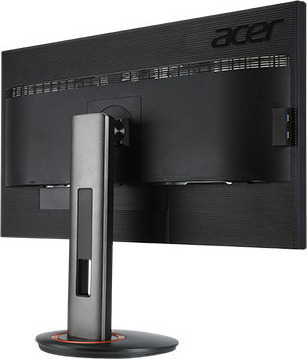
IPS glow : It don’t really bother me much on the unit I received,īut something bothers me more : reflections. And i find image on his VA monitor a little blurry, I don’t like it. To me, VA feels like a slightly better TN, but not as great as IPS. I didn’t noticed any light bleed on my unit.Ĭolors are way better than TN of course, to compare with my brother Samsung c27hg70 I think colors are better on the Acer too. I find it has deeper blacks compared to my brother Samsung c27hg70 monitor, because there is some light bleed on his unit wich destroys blacks imo. The stand of the monitor is OK for me, pretty stable on my desktop no worries here, would be nice to have height adjustement but it’s OK.īlacks are deep, my TN monitor has deep blacks too, but the Nitro has deeper blacks. Image is way clearer than on my old TN monitor, I got no headache using it, it’s not the case with my old TN monitor, I often got headache with it (I’m wearing glasses with blue light filter).ġ44Hz feels good but not as good as the acer predator x241h I got a month ago (returned too because image was horrible, far more horrible than my old TN). My current monitor is an old LG 60Hz TN panel (LG 2361W flatron) and that’s what I noticed with the Acer Nitro :Ģ7″ is a really nice size and 1440p is very a huge step from 1080p. So I bought the Acer Nitro VG270UPbmiipx (27 IPS 144Hz Freesync panel) 3 weeks ago and I already returned one unit. Let’s take a look.Hello everyone, I will start by saying sorry if my english is not very good but I’m french. Hopefully Acer hasn’t cut corners on image quality in an effort to get FreeSync in users’ hands.

The XG we’re testing today sounds great on paper and it’s a decent value to boot. We’re anxiously awaiting delivery of our test sample. But Acer has an example on its way to us now the XB270HU is the first monitor from a mainstream brand to offer a 144Hz refresh rate in an IPS panel, and on top of that it’s QHD.

We’ve reviewed exactly two IPS monitors capable of running faster than 60Hz. Almost all gaming monitors still use TN parts, and that has put off some users. Much has been debated about IPS versus TN in the desktop monitor realm. While the banding artifacts caused by this have largely been eliminated by good video processing, it’s still best to maintain the same bit-depth throughout the signal chain. Older-generation gaming screens employed a 6-bit panel and frame rate conversion (FRC) to sync with the 8-bit signal coming from the computer.

Another feature we’re glad to see is a native 8-bit color depth.


 0 kommentar(er)
0 kommentar(er)
